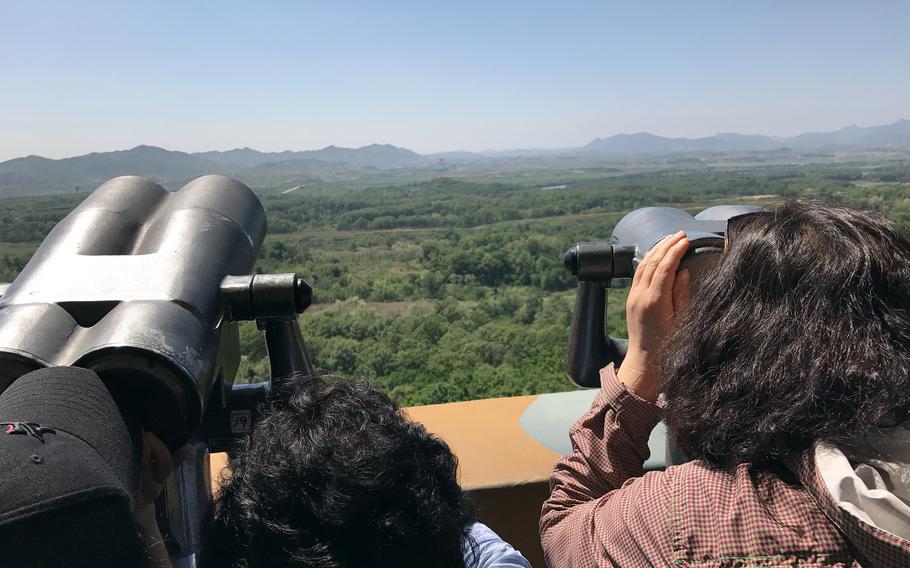
Tourists look across the Demilitarized Zone at North Korea during a visit to Dora Observatory, May 24, 2017. (Aaron Kidd/Stars and Stripes)
OSAN AIR BASE, South Korea — City-sponsored tours of the heavily fortified Demilitarized Zone that separates North and South Korea resumed Wednesday after a daylong pause while North Korea destroyed roads leading to the South.
Paju, the South Korean city on the DMZ’s western border, on Wednesday morning reopened Dora Observatory, which was closed nearly 24 hours, a city official said by phone that day.
The observatory atop Mount Dora offers scenic views across the DMZ, and visitors can use binoculars to get a closer look at North Korean territory.
However, access to the observatory’s rooftop is now prohibited along with taking pictures northward on the building’s first and second floors, the official said.
South Korean officials customarily speak to the media on condition of anonymity
The Goseong Unification Observatory near the DMZ’s eastern border also reopened Wednesday after a daylong closure, an observatory worker said by phone that day.
Those tours are separate from U.N. Command’s tours of the Joint Security Area, where visitors may see North Korean soldiers up close and step across the border while inside the area’s iconic blue conference buildings.
U.N. Command tours were suspended July 18, 2023, after Army Pvt. 2nd Class Travis King dashed across the border without authorization.
The two observatories opened less than a day after North Korea blew up two abandoned roads in a move to further sever ties with South Korea.
The observatory tours were temporarily suspended “in order to protect the safety of the people due to the North Korean military’s activities in the border areas,” the South’s Joint Chiefs of Staff said Wednesday.
“The military is closely monitoring the North Korean military’s moves and working to manage the current situation stably,” the Joint Chiefs said. “In addition, each regional unit is taking necessary measures with the safety of the people as the top priority and planning to flexibly support security tours.”